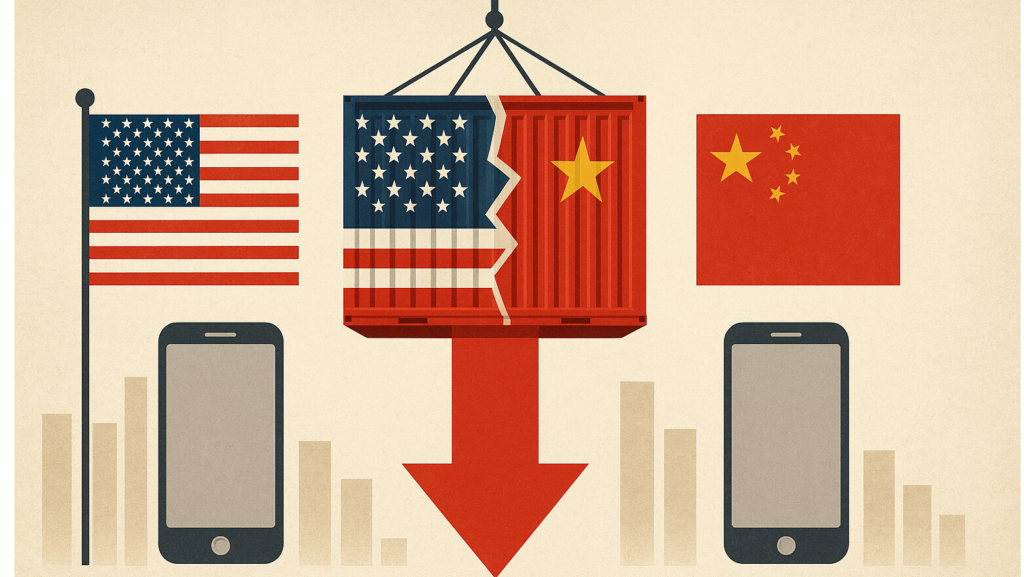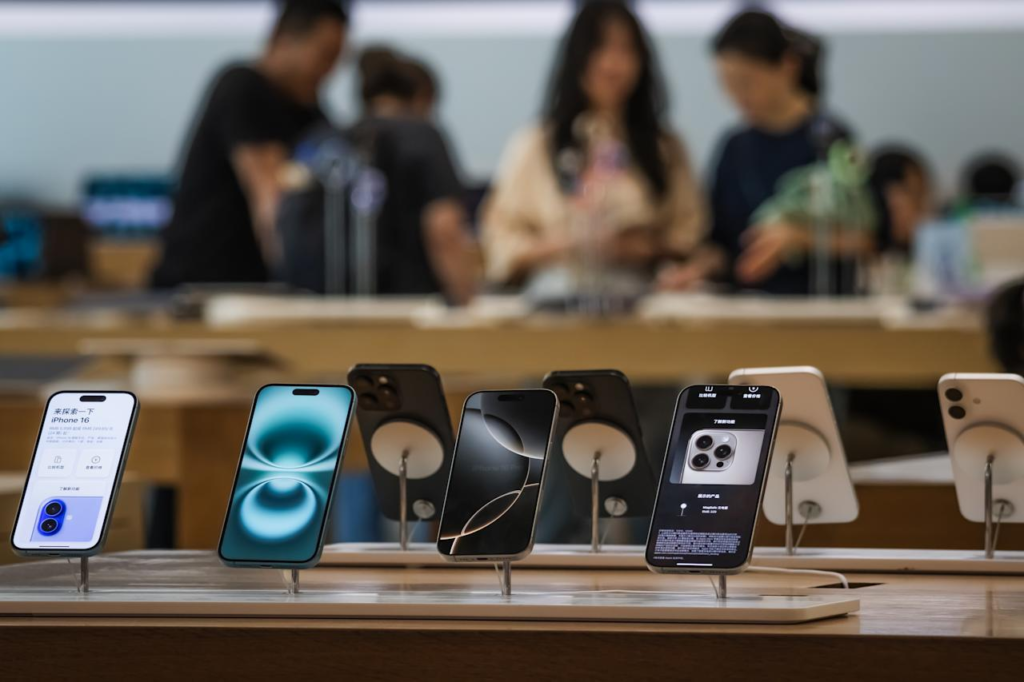In a dramatic turn of events, China’s iPhone exports to the United States have plummeted to their lowest level in 14 years, according to recent trade data. The steep decline, reported in April 2025, is a direct result of President Donald Trump’s aggressive tariff policies targeting Chinese goods. With tariffs reaching a cumulative 145% on Chinese imports, the tech industry, particularly Apple, is feeling the heat. This article explores the impact of these tariffs, why iPhone exports have dropped so sharply, and what it means for American consumers, businesses, and the global trade landscape.

The Tariff Timeline: A Trade War Escalates
The U.S.-China trade war, reignited during Trump’s second term, has taken a toll on global supply chains. In April 2025, Trump imposed a staggering 145% tariff on Chinese imports, including a 125% “reciprocal” tariff and an additional 20% levy tied to China’s alleged role in the fentanyl trade. These measures followed a series of escalating trade disputes, with China retaliating by imposing up to 125% tariffs on U.S. goods. The tit-for-tat trade measures have disrupted the flow of goods, with electronics like iPhones bearing the brunt of the impact.
According to a Yahoo Finance report, Chinese smartphone exports, including Apple’s iPhone, fell by 72% in April 2025, dropping to just $689 million—the lowest since 2011. The Port of Los Angeles, the busiest container hub in the U.S., saw shipments decline by as much as 30% in early May, underscoring the tariffs’ immediate effect on trade.

Why iPhones? Apple’s China Connection
Apple, one of America’s most iconic companies, relies heavily on China for manufacturing. Approximately 80% of iPhones sold in the U.S. are assembled in China, with major suppliers like Foxconn operating massive factories there. The country’s skilled workforce and established supply chains have made it a global hub for electronics production. However, Trump’s tariffs have thrown a wrench into this well-oiled machine.
Initially, there was hope that Apple might escape the worst of the tariffs. On April 12, 2025, the U.S. Customs and Border Protection agency announced exemptions for smartphones, computers, and other electronics, providing temporary relief for tech giants like Apple. However, this reprieve was short-lived. Trump signaled on April 14 that new tariffs on critical components, such as semiconductors, could still be imposed, creating uncertainty for companies reliant on Chinese manufacturing.
The threat of higher costs has forced Apple to rethink its strategy. Analysts estimate that if the full 145% tariff were applied, the price of an iPhone 16 Pro Max could skyrocket from $1,199 to as much as $2,150. To avoid passing these costs onto consumers, Apple has accelerated efforts to diversify its supply chain, with a significant pivot toward India.
Apple’s Pivot to India: A Strategic Shift
In response to the tariffs, Apple has ramped up iPhone production in India. In March 2025, the company exported 97.6% of its India-made iPhones to the U.S., up from 81.9% in the previous quarter. This shift was driven by fears of escalating tariffs on Chinese goods. Manufacturers like Foxconn and Tata Electronics have invested heavily in India, with Foxconn’s $2.6 billion Bengaluru facility set to begin operations in May 2025.
While India offers a promising alternative, scaling up production to meet U.S. demand is no small feat. Analysts at Counterpoint Research estimate that India could account for 25-30% of global iPhone shipments in 2025, up from 18% in 2024. However, building a robust ecosystem to rival China’s manufacturing prowess will take years and billions of dollars. For now, Apple is stockpiling inventory and chartering cargo flights to ferry iPhones from India to the U.S., buying time to navigate the trade war.

Impact on American Consumers
The tariffs’ ripple effects are already being felt by American consumers. With iPhone exports from China at a 14-year low, there’s growing concern about potential price hikes and supply shortages. If Apple passes on the cost of tariffs, the price of an iPhone could increase by 30-85%, depending on the model. For example, a base iPhone 16, currently priced at $799, could climb to $1,142, while premium models could approach $2,300. Such increases could dampen demand, especially as competitors like Samsung, which manufactures in countries like South Korea and Vietnam with lower tariffs, gain a competitive edge.
Beyond smartphones, the tariffs are driving up costs for a wide range of goods. The Tax Foundation estimates that the tariffs on Chinese goods alone will add $329 annually to the average U.S. household’s expenses. Combined with tariffs on Canada and Mexico, the total cost could reach $1,190 per household in 2025, with projections of $1,462 in 2026. These figures don’t account for the loss of consumer choice or higher prices for substitute goods, which could further strain budgets.
Businesses Brace for “Irreversible” Damage
The tariffs are also wreaking havoc on U.S. businesses, particularly those reliant on Chinese imports. Supply chain executives report canceled freight orders and abandoned cargo as companies halt shipments from China. Industries like furniture, toys, apparel, and sports equipment have seen a complete stop in orders from U.S. importers. Alan Murphy, CEO of Sea-Intelligence, noted that the tariffs have hit like a “ton of bricks,” with many businesses facing “irreversible” damage.
Retailers are scrambling to mitigate the impact. Some, like Birkenstock and Pandora, plan to raise prices globally to spread out the costs, while others are turning to bonded storage and foreign trade zones to delay tariff payments. However, with only one to two months of inventory on hand, retailers face a June 2025 deadline to secure goods for the holiday shopping season. Failure to do so could lead to empty shelves and higher prices.
China’s Response and Global Trade Implications
China has not taken the tariffs lightly. In addition to imposing 125% tariffs on U.S. goods, Beijing placed export controls on rare earth minerals critical for tech manufacturing. These restrictions, effective since April 4, 2025, have created bottlenecks for companies like Apple, which rely on these materials for components. China’s Ministry of Commerce called the U.S. exemptions a “small step” toward correcting its “wrong practice” but urged the complete removal of tariffs.
Globally, the tariffs are reshaping trade dynamics. Countries like India and Vietnam are emerging as winners, with lower tariffs making them attractive manufacturing hubs. Meanwhile, U.S. allies like Japan, South Korea, and Taiwan face their own tariffs, complicating strategic efforts to counter China’s influence. The International Monetary Fund has warned that the tariffs could trigger a global downturn, with stock markets already reeling from the uncertainty.
Can Apple and the U.S. Adapt?
Apple’s relationship with the Trump administration could play a pivotal role in navigating the crisis. CEO Tim Cook has been a frequent visitor to the White House, leveraging his rapport with Trump to secure exemptions during the first trade war. While Trump has publicly stated he doesn’t want to “hurt” Apple, his push for domestic manufacturing faces significant hurdles. Building iPhone factories in the U.S. would cost an estimated $30 billion to shift just 10% of Apple’s supply chain, with major disruptions to production.
For now, Apple is banking on India and other countries to fill the gap. However, the complexity of global supply chains and the skilled labor required for electronics manufacturing make a full transition challenging. As analyst Dan Ives of Wedbush Securities noted, “Apple could be set back many years by these tariffs,” with no clear short-term solution.
Looking Ahead: A Fragile Truce
A 90-day trade truce between the U.S. and China, agreed upon in May 2025, has done little to ease tensions. While both sides reduced tariffs—China to 10% and the U.S. to 30% on Chinese goods—the 20% fentanyl-related tariffs remain in place. Businesses remain uncertain about China’s export controls on rare earths, adding to the volatility.
As the trade war continues, the tech industry and American consumers are caught in the crossfire. With iPhone exports at a historic low, Apple faces tough choices: absorb the costs, raise prices, or accelerate its shift away from China. For now, the future of U.S.-China trade hangs in the balance, with ripple effects that could redefine global commerce for years to come.
Conclusion
The Trump tariffs have sent shockwaves through the tech industry, driving China’s iPhone exports to a 14-year low and forcing Apple to pivot to alternative manufacturing hubs like India. While exemptions have provided temporary relief, the uncertainty surrounding future tariffs and China’s retaliatory measures keeps businesses and consumers on edge. As the U.S. pushes for domestic manufacturing, the costs—both economic and logistical—remain daunting. For American shoppers, the prospect of higher iPhone prices looms large, signaling a new era of trade challenges in an interconnected world.
Also Know :- Brands Embrace User-Generated Content in 2025 to Build Trust and Engagement






